Pallet Inverter: How to Ensure Compliance When Swapping Hazardous Material Pallets?
Handling pallets of hazardous materials is a high-stakes task in any industrial setting. I’ve been in factories where one wrong move with a load of chemicals or industrial agents led to a major incident. The process is filled with risk, from potential spills and contamination to serious worker injuries. These incidents don't just stop a production line; they can lead to heavy fines from regulatory bodies, expensive cleanup operations, and damage to a company's reputation. But what if you could transform this vulnerable point in your logistics chain into a secure, efficient, and fully compliant operation? A purpose-built pallet inverter is the key to achieving this control and peace of mind.
To ensure compliance when swapping hazardous material pallets, you must use a pallet inverter that is specifically engineered with enhanced safety features. These include secure, full-contact clamping systems, integrated spill containment, and proper electrical grounding for volatile substances. Compliance also depends on following strict operational protocols and adhering to key regulations from bodies like OSHA, the EPA, and the DOT. Combining the right machine with the right procedures is the only way to guarantee safety.
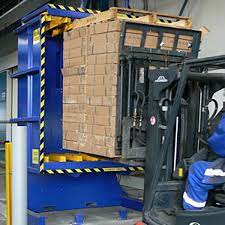
This might sound simple on the surface, but the details make all the difference. The engineering of the machine, the training of your team, and the validation of your process are all critical pieces of the puzzle. Let’s dive deeper into what you need to know to protect your people, your product, and your business. It's a journey I've helped many clients navigate, and it always starts with a solid foundation of knowledge.
What are the Key Regulatory Standards for Handling Hazardous Pallets?
Navigating the web of regulations for hazardous materials can feel like a full-time job. You have to consider workplace safety, environmental rules, and transportation guidelines. Are you following every OSHA rule for your team? Are your spill containment plans up to EPA standards? Misinterpreting a single rule can put your entire operation and your permits at risk. I’ve seen companies face serious penalties for overlooking details they thought were minor. But understanding these standards is the first and most important step toward building a truly safe and defensible handling process.
The key regulatory standards for handling hazardous pallets in the U.S. primarily come from three main bodies: the Occupational Safety and Health Administration (OSHA) for workplace safety, the Environmental Protection Agency (EPA) for environmental protection, and the Department of Transportation (DOT) for transport. These regulations dictate everything from proper containment and labeling to specific handling procedures and emergency response plans.
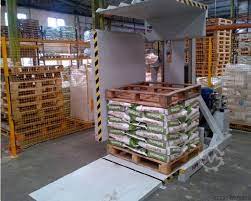
A Deeper Look at the Regulatory Landscape
For a steel mill owner like yourself, Javier, compliance isn't just about avoiding fines; it's about operational continuity and managing risk. A violation can trigger audits and shutdowns that are far more costly than the initial investment in compliant equipment. Let's break down what each agency requires and why it matters for your pallet swapping operations.
OSHA (Occupational Safety and Health Administration)
OSHA's primary concern is worker safety. When it comes to hazardous materials, their Hazard Communication Standard (HCS) is fundamental. This requires that the identities and hazards of chemicals are available and understandable to workers. For your pallet inverter process, this means:
- Clear Labeling: All containers on the pallet must be clearly labeled. The pallet inverter operator must be able to identify the material before starting the transfer.
- Safety Data Sheets (SDS): Your team must have immediate access to the SDS for every material being handled. This document contains critical information on handling, storage, and emergency measures.
- Worker Training: OSHA mandates that employees are trained on the risks of the chemicals they handle and the proper procedures for doing so safely. This includes training on the pallet inverter itself.
EPA (Environmental Protection Agency)
The EPA focuses on preventing environmental contamination. A spill of hazardous material is a direct violation of their regulations. The Resource Conservation and Recovery Act (RCRA) gives the EPA authority to control hazardous waste from "cradle-to-grave." This impacts your operations by requiring:
- Spill Prevention and Containment: Your pallet swapping area must have measures to contain any potential spills. A pallet inverter with an integrated spill tray is not just a feature; it's a key part of your compliance strategy.
- Emergency Response Plan: You must have a documented plan for how to respond to a spill, including cleanup procedures and reporting requirements.
DOT (Department of Transportation)
If your hazardous materials are being shipped or received, DOT regulations apply. These rules are designed to ensure the safe transport of hazardous goods. While the pallet inverter is a stationary piece of equipment, its use is part of the broader logistics chain. Key considerations include:
- Proper Packaging: The DOT has strict rules on the types of containers used for specific materials. Your pallet inverter must be able to handle these approved containers (drums, totes, etc.) without compromising their integrity.
- Securement: Loads must be properly secured. The clamping mechanism of your inverter must be strong enough to hold the load securely during the entire 180-degree rotation.
Here is a simple breakdown of how these regulations apply directly to the use of a pallet inverter:
| Regulatory Body | Key Requirement | How it Applies to Pallet Inverters |
|---|---|---|
| OSHA | Worker Safety & Hazard Communication | Operators must be trained on the machine. The machine must not create new hazards (e.g., crush points, instability). |
| EPA | Spill Prevention, Control, & Countermeasure | The inverter should have built-in spill containment. The process must minimize the risk of a release into the environment. |
| DOT | Secure Transportation of Hazmat | The inverter's clamping system must handle DOT-specified containers without damage, ensuring the load remains secure for transport. |
For your facility, meeting these standards with a verified process and the right equipment is the ultimate insurance policy against the regulatory and financial risks of handling hazardous materials.
How Can a Pallet Inverter Be Engineered for Hazardous Material Safety?
A standard pallet inverter is great for swapping loads of stable, non-hazardous goods like boxes or bags. I've installed many of them. But using that same machine for a pallet of chemical drums is a completely different story. It's a risk I would never advise a client to take. The potential for a clamp to crush a container or for a small leak to occur during rotation is simply too high. For hazardous materials, you don't just need an inverter; you need a machine that has been fundamentally engineered, from the ground up, for safety and containment.
A pallet inverter is engineered for hazardous material safety by incorporating specific, robust features. These include full-surround clamping systems that secure the load without creating pressure points, adjustable clamping pressure to prevent container damage, and integrated spill containment trays to capture any leaks. It also involves using anti-static components for flammable materials and building the entire machine with heavy-duty, durable steel to withstand the industrial environment.
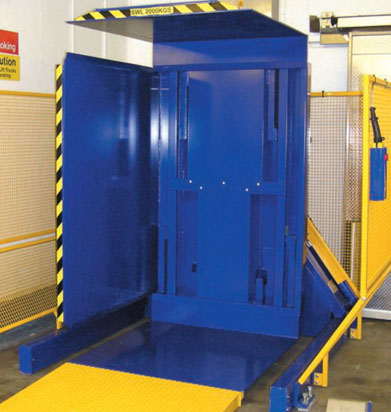
Dive Deeper: The Anatomy of a Hazmat-Ready Pallet Inverter
From my years as an engineer, I can tell you that the difference between a standard machine and a hazardous-duty one is in the details. These are not optional upgrades; they are essential design elements. Let's look at the critical engineering features that you must demand from a supplier.
1. Advanced Clamping Systems
The clamping mechanism is the most critical component. On a standard machine, you might find simple "fork-style" clamps. For hazardous loads, this is inadequate.
- Full-Width Plates: Instead of forks, look for solid, full-width clamping plates. These distribute pressure evenly across the entire side of the load. This prevents drums or totes from being crushed or deformed.
- Adjustable Pressure Control: Not all containers are the same. A robust hydraulic system with a user-friendly control panel allows operators to set the precise clamping pressure needed for heavy drums versus lighter plastic totes. This prevents damage and ensures a secure grip every time.
- Load Height Sensors: Automatic sensors that detect the height of the load ensure the top clamp applies just enough pressure without any guesswork from the operator. This is a simple feature that removes a major source of human error.
2. Integrated Spill Containment
Hoping a spill won't happen is not a strategy. A properly engineered machine plans for it.
- Sealed Base: The base of the pallet inverter should be a sealed, liquid-tight tub. This acts as a secondary containment unit.
- Sump with Drain Port: This tub, or sump, should have the capacity to hold the contents of at least one full container. It must also have a drain port for safe and easy cleanup in the event of a spill. This prevents a small leak from becoming a major environmental incident.
3. Electrical and Static Safety
For facilities handling flammable liquids or combustible dusts, static electricity is a silent but deadly hazard.
- Grounding Lugs: The machine must have clearly marked grounding lugs to connect it to your facility's earth ground, dissipating any static buildup.
- Explosion-Proof Components: In environments with flammable vapors (classified locations), the motor, controls, and all electrical components must be rated as explosion-proof (e.g., Class I, Division 1). This is a non-negotiable requirement.
- UHMW Liners: Using Ultra-High Molecular Weight plastic on clamping surfaces can reduce friction and the potential for static generation compared to steel-on-steel contact.
Here’s a comparison to make it clear:
| Feature | Standard Pallet Inverter | Hazardous Material Pallet Inverter | Why It Matters for You |
|---|---|---|---|
| Clamping | Basic forks or narrow plates | Full-width plates with adjustable pressure | Prevents crushing containers, accommodates diverse loads, reduces product loss. |
| Spill Control | None | Integrated, sealed sump base with a drain port | Meets EPA requirements, contains spills, simplifies cleanup, and prevents downtime. |
| Electrical Safety | Standard motor and controls | Grounded, with options for explosion-proof components and anti-static liners | Prevents ignition of flammable materials, ensuring maximum safety in volatile areas. |
| Construction | Medium-duty steel | Heavy-duty, reinforced steel frame | Provides long-term durability and stability for heavy loads, a better ROI. |
When you invest in a pallet inverter for hazardous materials, you are investing in this level of engineering. It's what allows you to turn a high-risk process into a routine, safe, and compliant operation.
What is the Role of Operator Training in Safe Pallet Swapping?
I can't stress this enough: you can buy the most advanced, safest piece of equipment in the world, but it is only as safe as the person operating it. I've seen situations where a company invested heavily in top-tier machinery, only to have an accident caused by an operator who wasn't properly trained. An untrained operator can bypass safety features, use incorrect settings, or fail to spot a problem before it becomes critical. This gap between the machine's capability and the operator's knowledge is where most preventable incidents occur.
Operator training is absolutely critical for safe pallet swapping of hazardous materials. Proper training ensures that operators understand not only the machine's functions but also its safety interlocks, emergency procedures, and the specific protocols for different types of hazardous goods. It bridges the gap from theory to practice, turning a potentially dangerous task into a standardized, low-risk procedure and minimizing the chance of human error.
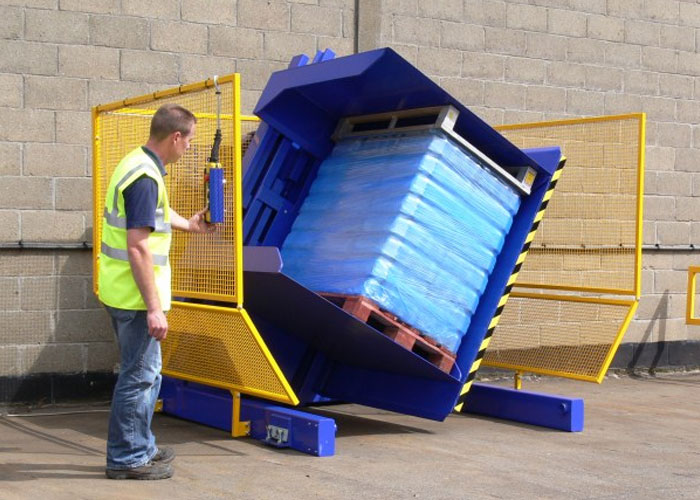
Dive Deeper: Building a Bulletproof Training Program
A comprehensive training program is more than just showing someone which buttons to push. It's about building competence and confidence. It's a key part of your responsibility under OSHA and a cornerstone of a strong safety culture. For a leader like Javier, investing in training is investing in your people and the stability of your production. A well-trained team is an asset that directly impacts your uptime and reduces your liability.
Here’s what a robust training program should look like. I recommend a combination of classroom learning and hands-on practice.
1. Foundational Knowledge (Classroom)
Before an operator even touches the machine, they need to understand the "why."
- Hazard Communication Review: Start by reviewing the Safety Data Sheets (SDS) for the materials they will be handling. They must understand the specific risks: Is it flammable? Corrosive? Toxic?
- Machine Overview: Explain the purpose of every component on the pallet inverter, especially the safety features. Why are the clamping plates solid? What does the spill tray do? How does the emergency stop work?
- Understanding Regulations: Give them a basic understanding of the OSHA and EPA rules that apply to their job. This gives them context and reinforces the importance of following procedures.
2. Standard Operating Procedures (SOPs) & Hands-On Practice
This is where theory becomes action. The training should be conducted under the close supervision of an experienced trainer.
- Pre-Use Inspection: The operator must learn to conduct a daily inspection before their first cycle. This is a non-negotiable first step.
- Step-by-Step Operation: Walk them through the entire process with a non-hazardous load first. Loading the pallet, setting the clamping pressure, running the cycle, and unloading. Repeat this until they are comfortable.
- Handling Off-Normal Situations: What happens if a load shifts slightly? What if a container looks damaged? Train them to stop, assess, and ask for help rather than trying to force the machine.
3. Emergency Response Drills
Knowing what to do in an emergency is as important as knowing how to prevent one.
- E-Stop Activation: The operator should know the location of all emergency stop buttons and be able to activate them instinctively.
- Spill Response: Conduct a drill using water instead of a hazardous chemical. Have them practice deploying the spill kit and following your facility's emergency plan.
- Reporting: Make sure they know who to report an incident to immediately.
Here is a sample pre-use inspection checklist that should be part of every operator's daily routine:
| Checkpoint | Condition | Action Required (if not OK) |
|---|---|---|
| General Area | Clear of debris and spills | Clean the area before operation. |
| Emergency Stops | Buttons are accessible and functional | Clear obstructions. Test functionality. |
| Hydraulic System | No visible leaks from hoses/fittings | Do not operate. Report to maintenance. |
| Clamping Plates | Clean and free of damage | Clean plates. Report any damage. |
| Control Panel | All lights and gauges working | Report any faults. |
| Safety Guards/Light Curtains | In place and operational | Test and verify. Do not bypass. |
By implementing a training program this thorough, you are not just ticking a box for compliance. You are empowering your team to be the first line of defense in maintaining a safe and productive work environment.
How Do You Validate a Pallet Inverter for Compliance in Your Facility?
Buying a pallet inverter with all the right safety features is the first step. But it's not the last. You need a formal process to prove that the machine works as intended within your specific environment and with your specific products. How do you prove to an auditor, or even to your own management team, that your new process is truly compliant and safe? Simply trusting the manufacturer's spec sheet is not enough. Without a clear validation process, you are operating on assumptions, and assumptions are a weak defense during an inspection.
You validate a pallet inverter for compliance by conducting a structured set of tests known as Installation Qualification (IQ), Operational Qualification (OQ), and Performance Qualification (PQ). This is a systematic approach used in many regulated industries. This process provides documented evidence that the machine is installed correctly (IQ), its features operate as designed (OQ), and it consistently and safely performs its task under real-world conditions (PQ).
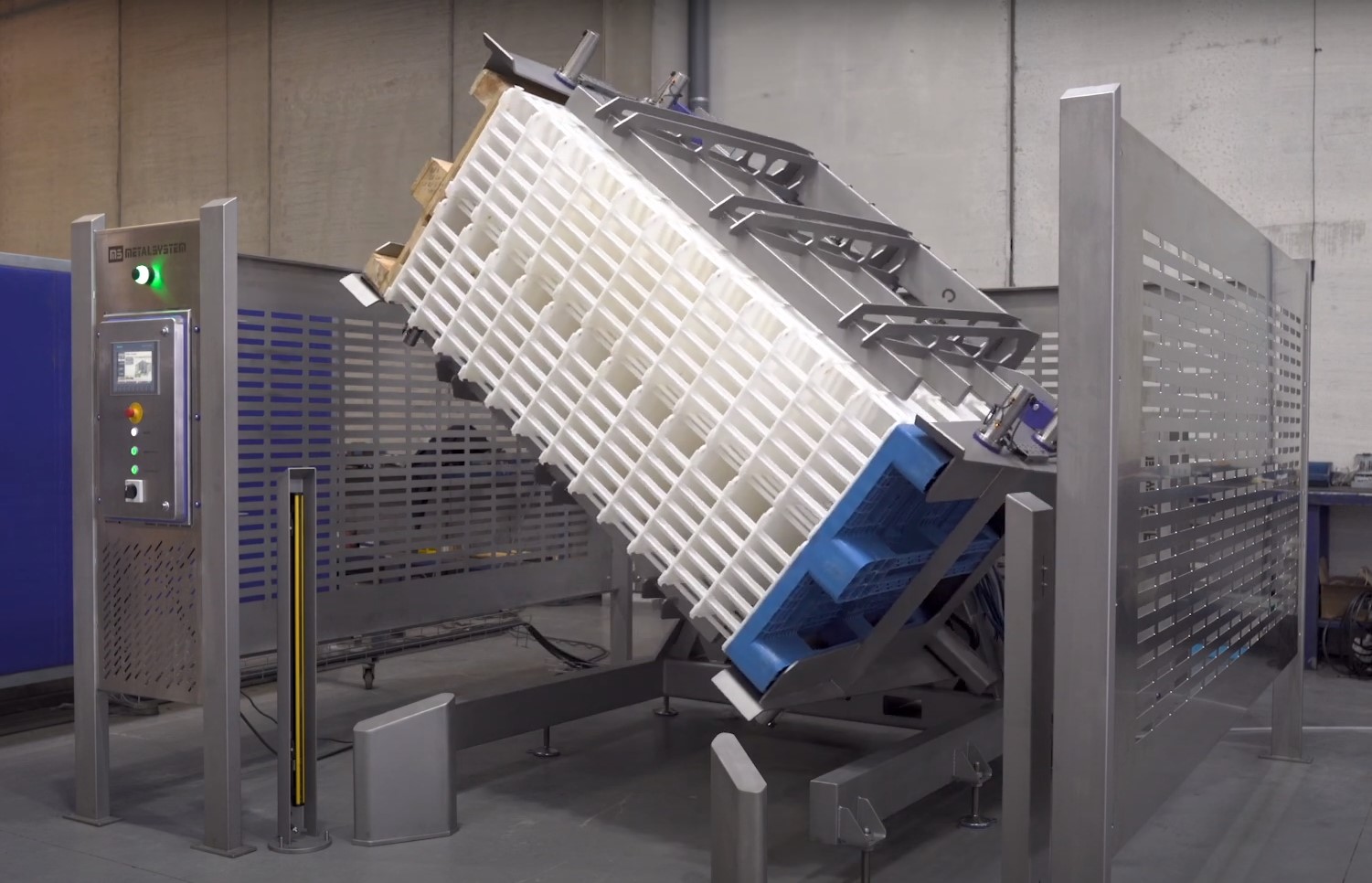
Dive Deeper: A Practical Guide to IQ, OQ, PQ
For an engineer and business owner like you, Javier, a structured validation process is not just bureaucracy; it’s good engineering practice. It’s the final step in your due diligence for any major capital investment. It confirms you got what you paid for and that the equipment is fit for its purpose. This process also creates the documentation you need for any future audits. Let’s break down what each stage entails in a practical way.
Installation Qualification (IQ)
The goal of IQ is to confirm the machine has been installed correctly and according to all specifications. It's a checklist-based review performed before the machine is even turned on.
- Verify Documentation: Do you have the user manual, electrical schematics, and the manufacturer's certificate of conformity?
- Check Utilities: Is the electrical supply the correct voltage and phase? Is it connected via the specified circuit breaker? Is the machine properly grounded?
- Physical Inspection: Is the machine located in the designated spot? Is it level and securely anchored to the floor? Are all safety guards and labels in place?
Operational Qualification (OQ)
OQ is where you test the machine's functions in a controlled way, without any actual product. The goal is to prove that the machine operates as the manufacturer intended.
- Test Every Control: Press every button on the control panel. Does it do what it's supposed to do?
- Verify Safety Systems: Deliberately test the emergency stop buttons. Block the light curtains to ensure the machine stops immediately.
- Calibrate and Test Ranges: Test the full range of the clamping pressure settings. Does the pressure gauge match the setting on the control panel? Run the machine through a full rotation cycle. Is it smooth?
Performance Qualification (PQ)
PQ is the final and most important stage. Here, you test the machine with your actual hazardous materials and under real-world conditions to prove it consistently produces a safe outcome.
- Simulated "Worst-Case" Scenarios: Use the heaviest and most awkward pallet loads you expect to handle.
- Consistency Runs: Perform a series of consecutive pallet swaps (e.g., 10-20 cycles). Inspect the containers after each cycle for any signs of stress, leaks, or damage.
- Document Everything: For each PQ run, record the date, operator, type of material, clamping pressure used, and the outcome of the post-swap inspection. This data is your proof of compliance.
This structured validation process can be summarized like this:
| Validation Stage | Question it Answers | Key Activities | Output |
|---|---|---|---|
| IQ | "Is it installed correctly?" | Verifying machine placement, utility connections, documentation, and safety components against specifications. | Signed IQ checklist. |
| OQ | "Does it work as designed?" | Testing all controls, alarms, and safety features without product. Verifying operational ranges. | Signed OQ test results. |
| PQ | "Does it work reliably and safely in my process?" | Running the machine with actual product under real-world conditions. Documenting consistency and performance. | Signed PQ report with documented evidence of success. |
By completing this IQ/OQ/PQ process, you create an airtight case that your pallet swapping operation is not only designed for safety but has been rigorously tested and proven to be compliant in your facility. This data can then be logged and stored, perhaps even integrated with your MES, providing the traceability needed for modern, data-driven manufacturing.
My Insights
Javier, as a fellow business owner who also started his career as an engineer on the factory floor, I understand the pressures you face. You are constantly balancing production targets, cost controls, and the immense responsibility of keeping your people safe. When I look at a piece of equipment like a pallet inverter, I don’t just see a machine. I see a solution to a complex set of business challenges.
For you, investing in the right pallet inverter for hazardous materials is not an operational expense. It is a strategic investment in the resilience and profitability of your entire steel mill. Think about the true cost of an incident. It's not just the potential fine or the cleanup bill. It's the hours or days of lost production from a critical line being shut down. In my experience, the cost of a single major incident in terms of downtime alone often exceeds the cost of the equipment that would have prevented it. This machine directly addresses your goal of improving产能利用率 (capacity utilization) by eliminating a significant point of failure and risk.
Furthermore, this is a tangible step in your数字化转型 (digitalization) journey. Modern pallet inverters are not the simple hydraulic presses of the past. They can be equipped with sensors that track every cycle, monitor clamping pressures, and log data. This information can be fed directly into your MES platform. Imagine having a complete, time-stamped record of every hazardous pallet swap, available for any compliance audit. This is how you achieve the comprehensive production visualization you're aiming for. It turns a manual, high-risk task into a controlled, data-rich process.
Finally, you mentioned you are looking for a strategic partner, not just a supplier. I built SHJLPACK on that exact principle. The right partner doesn’t disappear after the sale. They work with you through the validation process, they help you develop your training programs, and they are there to provide support for the life of the machine. This is about more than just equipment; it's about building a safer, more efficient, and more profitable operation together. This investment directly supports your goal of lowering overall operating costs and improving your利润率 (profit margin) by building a more robust and reliable process from the ground up.
Conclusion
A compliant pallet inverter is more than a machine. It's a foundational commitment to the safety, efficiency, and long-term operational stability of your entire facility.



